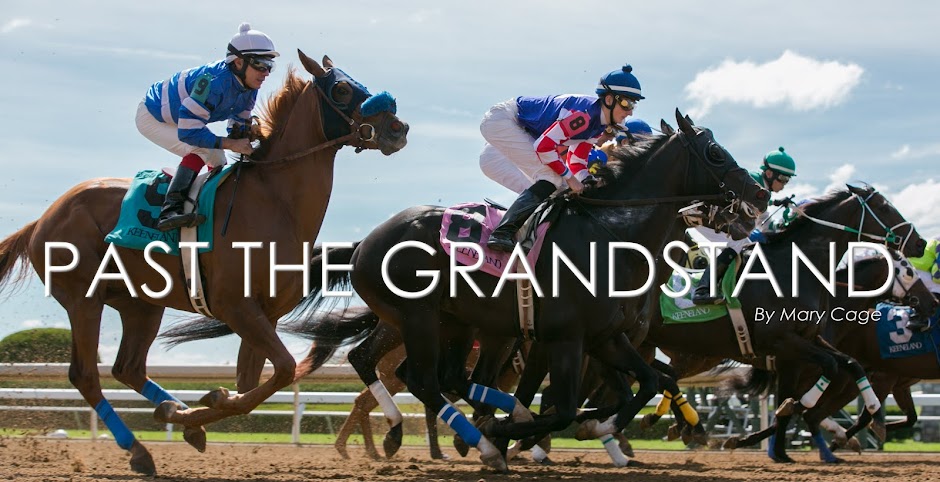The words above seem to be the kiss of victory. It seems as if almost every time I say or think those words, the “good-looking horse” ends up winning or performing well in its race. Of course, this does not always work, but the build of an athlete is necessary for a horse to be an athlete. And often, the more athletically built a horse is, the more athletic ability the horse has.
 |
| The turquoise lines divide this filly into theappropriate thirds. The purple linesindicate her shoulder angle and the pink lines show the comparison of the length of her topline and underline. |
Balance
It all starts with balance. Balance is a necessity. It is usually judged by how proportional a horse is. It is best for a horse to be easily divided in three parts. The best way to judge this is to picture a vertical line at the heart girth and the flank. The shoulder angle allows a horse to be more evenly balanced if it has an angle of about 45 to 55 degrees. This gives a horse a shorter topline in comparison to a longer underline, providing the horse with a longer stride.
A racehorse must have a strong loin. A strong topline protects the entire horse’s body and makes it sturdier. A strong loin allows the back to be nearly completely straight, but with a slight curve to it. The gray filly pictured could be a little stronger in the loin, but is overall fairly sturdy through her topline.
Structural Correctness
 |
| The yellow lines show the comparison of the angles of the pasterns and shoulder. Though it is a bit difficult to tell in this picture, this colt has straight, structurally correct legs. |
 |
| This colt has quality muscling (circled in purple) and is a great example for a horse with a high quality neck. The ratio of 2:1 for the neck is indicated by the turquoise lines. |
Muscling
A Thoroughbred racehorse should not have the quantity muscling of a Quarter Horse racehorse or halter horse, but they should still have quality muscling. This does not mean large amounts of muscling in the forearms and gaskins, but rather muscling that is neither inadequate nor exaggerated.
Quality
An important feature of a racehorse is the quality of its neck. It is preferred for a racehorse to have a long, thin neck that ties in at the point of the shoulder. A clean throat latch is necessary, as it makes it easier for a horse to breathe. The ratio for the top of the neck (the crest) to the bottom of neck should be about 2:1, meaning the top of the neck should be nearly twice as long as the bottom of the neck. Besides, in a photo finish, wouldn’t you want your horse to be able to stretch out their long neck?
Though it is not as important for a racehorse to have a refined head as it is for a halter horse, a racehorse still needs to have wide-set eyes, which allows a horse to have better vision. Another characteristic of their head that a racehorse needs is large nostrils, which makes it easier for them to breathe and often indicates a large set of lungs.
Heart Girth
 |
| This colt's deep heart girth is specified by a turquoise line. |
Of course there have been many successful racehorses that did not have the greatest physical appearance, but it most definitely helps to have good conformation. After all, the horses that blow you away with their build often blow the others away in the stretch.
All photo credit to Terri Cage.

Great. I'm learning!
ReplyDeletethat's a good looking horsey
ReplyDelete